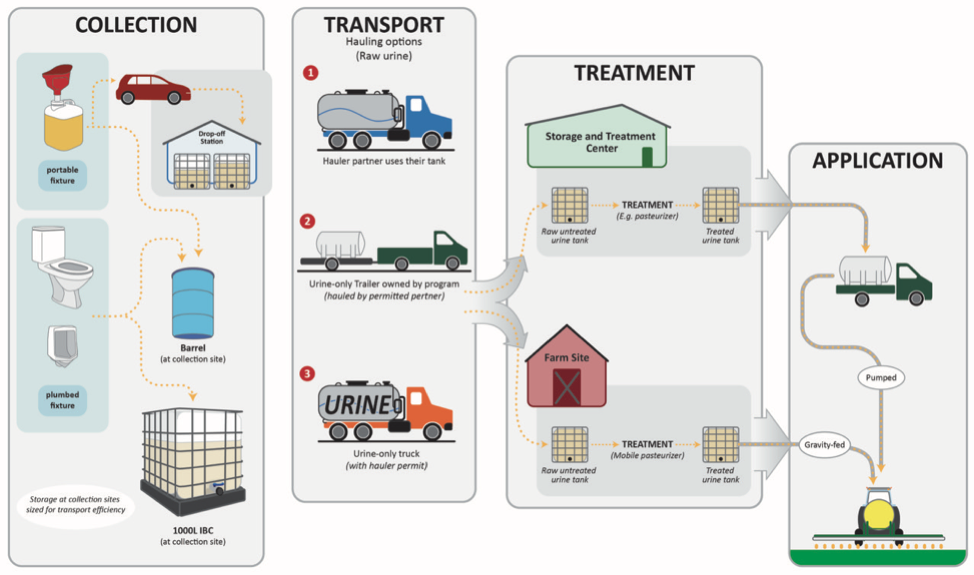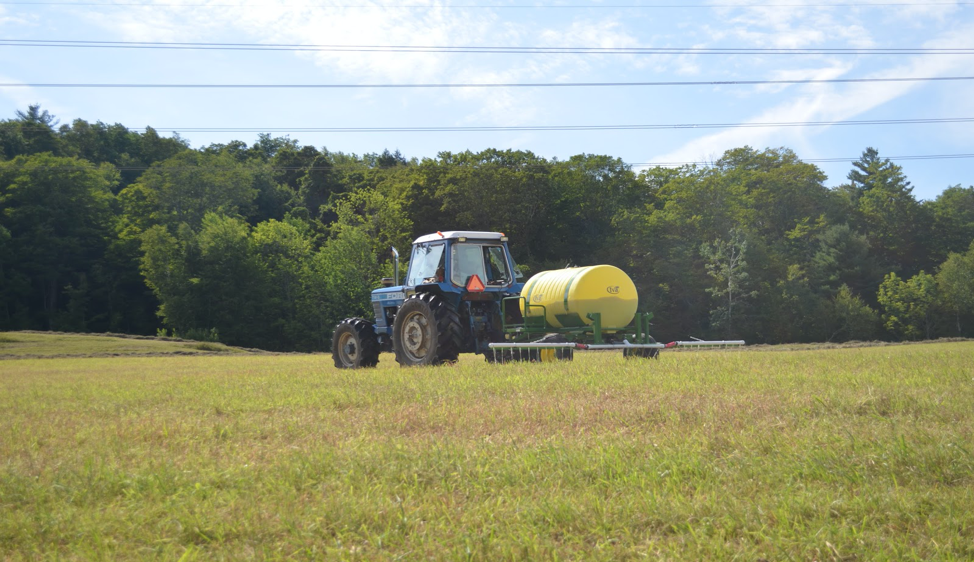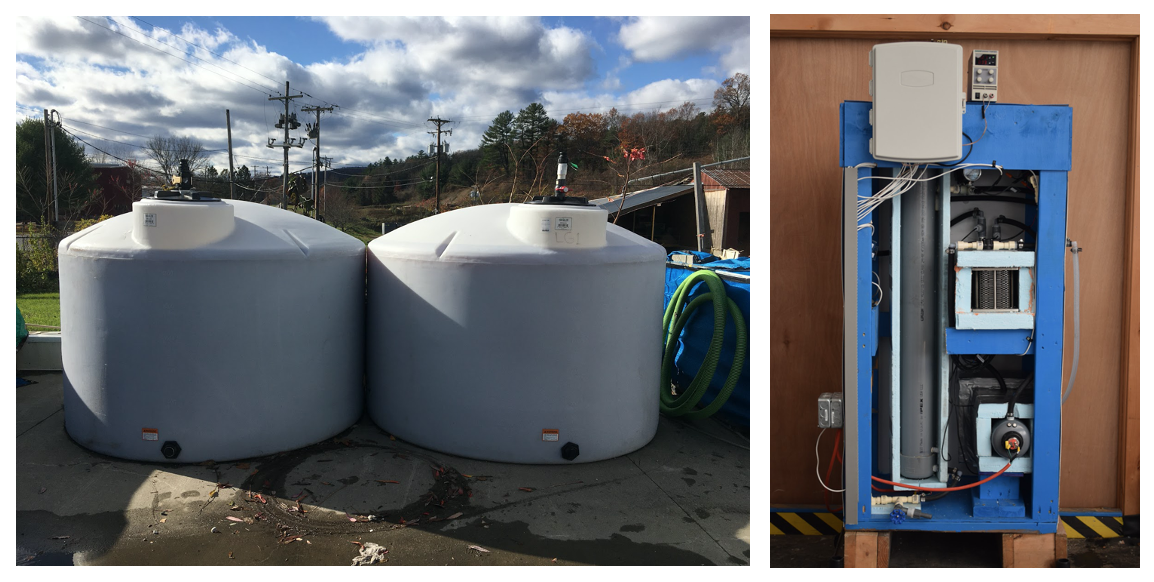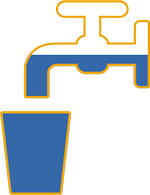How It Works
Urine Diversion is the practice of keeping human urine separate from the rest of the wastewater stream. Urine contains most of the plant nutrients found in human waste. Separation of urine at the source keeps these nutrients from causing water pollution and allows them to be used as an agricultural resource.
For millennia, people around the world have been collecting their urine to fertilize plants (see our FAQ on using urine in home gardens). While this is already a common practice in many communities, there is a new movement growing to incorporate urine reclamation into infrastructural design.
There are a wide range of methods for diverting urine, as well as treatment and application on farms or gardens. For a full breakdown of these steps, please read our Guide to Starting a Community-Scale Urine Diversion Program. Below is a description of how urine is collected, transported, treated, and applied under our community-scale urine recycling program.

1. Collection
5-gallon Portable Urine Collection System
Rich Earth’s “cubie” and funnel system is the most commonly used by our urine donors. This portable unit enables them to collect urine while keeping odors contained (which also means that nitrogen loss through ammonia volatilization is minimized.) The funnel assembly screws securely onto the jug. A ping-pong ball sits inside the funnel, sealing the opening and blocking odors but enabling urine to pass through.
When the cubie is full, the user unscrews the funnel and attaches a water-tight cap. The urine is then brought to Rich Earth’s urine depot for donation.

Plumbed Tanks
Urine can also be stored on-site and collected by a pump-out service once or twice a year. A variety of systems can be designed to divert urine to a plumbed tank.
Urine-diverting flush toilets have a special urine collection system at the front of the toilet bowl, which catches the urine and drains it to the urine collection tank. Many urine-diverting toilets require little to no water to flush urine, resulting in substantial water savings.

Waterless urinals are becoming common in public restrooms for water conservation purposes. They can easily be plumbed to urine collection tanks as well.
Finally, urine-diversion is being used in many parts of the world in conjunction with dry toilets for hygiene purposes–sanitation is improved by separating the urine because it allows the feces to dry, killing harmful pathogens more quickly. These systems also have the potential to be used to collect urine for fertilizer re-use and compost the feces. There are a variety of urine-diverting inserts available commercially for home construction of urine-diverting dry composting toilet systems. The Separett insert is a commonly used product in the US.
2. Transport
Transportation of urine from the collection site to the treatment center and/or farm application site can be done using a septage hauling partner or using a specially designed urine pump-out truck. In the case of home use (including farms that have on-site collection systems or urban gardens) this step is not necessary.
3. Treatment
When urine is used to fertilize produce for public consumption, sanitation is recommended by the WHO guidelines. This can be accomplished through either storage (68°F/20°C or higher for six months) or pasteurization (176°F/80°C degrees for 1.5 minutes). The Rich Earth Institute has developed a computer-controlled pasteurizer with a high-efficiency heat exchanger to sanitize urine quickly and energy-efficiently. High temperature composting and ultraviolet exposure are methods that may also be suitable for sanitizing large volumes of urine.
Storage capacity is a major expense and logistical challenge in large-scale urine recycling. Technologies to concentrate the fertilizer in urine into a smaller volume will play an important role in making widespread urine recycling economically viable. Methods for concentration include reverse osmosis, freeze concentration, evaporation, and vapor compression distillation.
4. Application
Urine is just as effective as commercially-available synthetic fertilizer. Application methods that minimize ammonia volatilization (nitrogen loss) are the most successful. See our ‘for farming‘ page for more information on using urine as a fertilizer.



